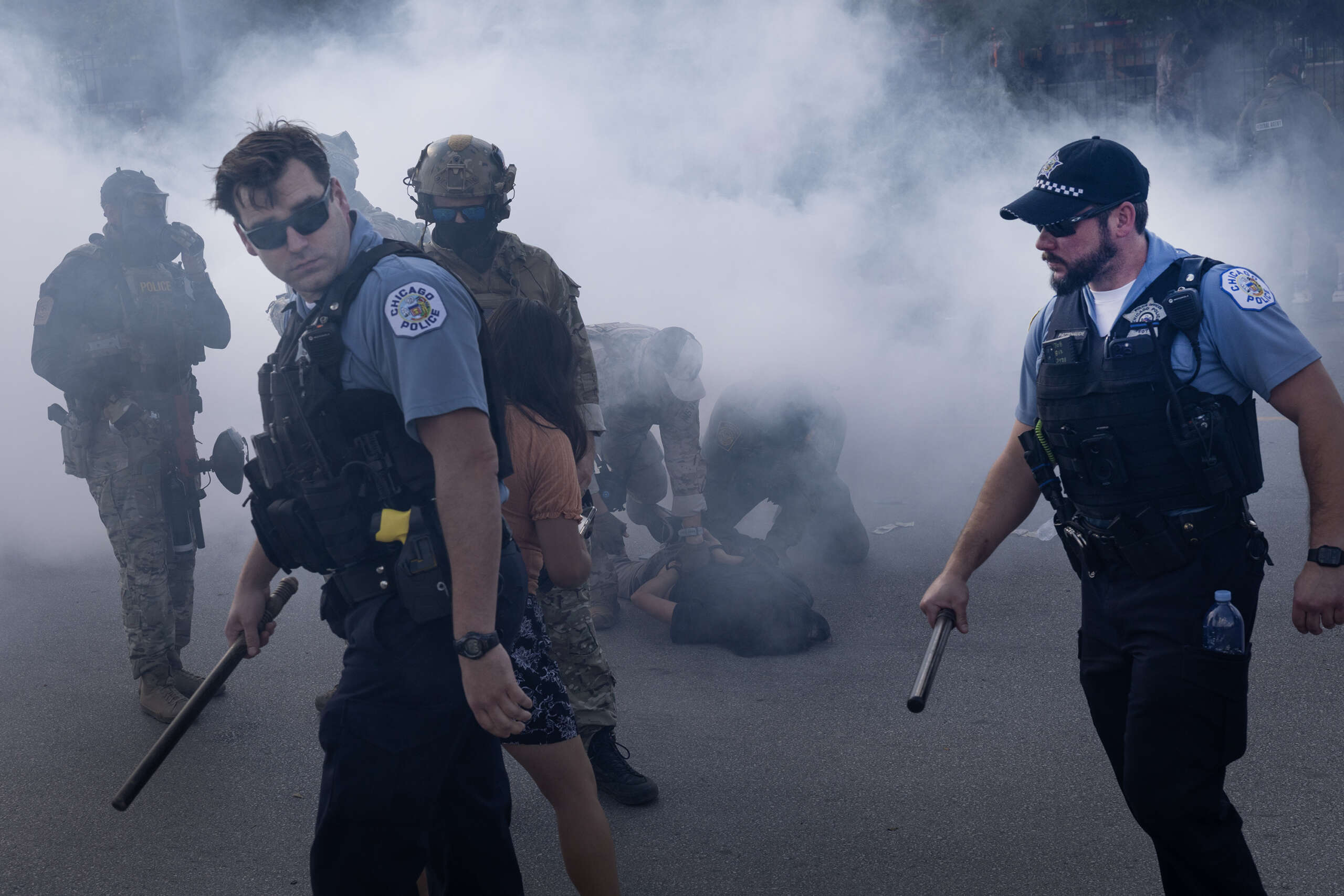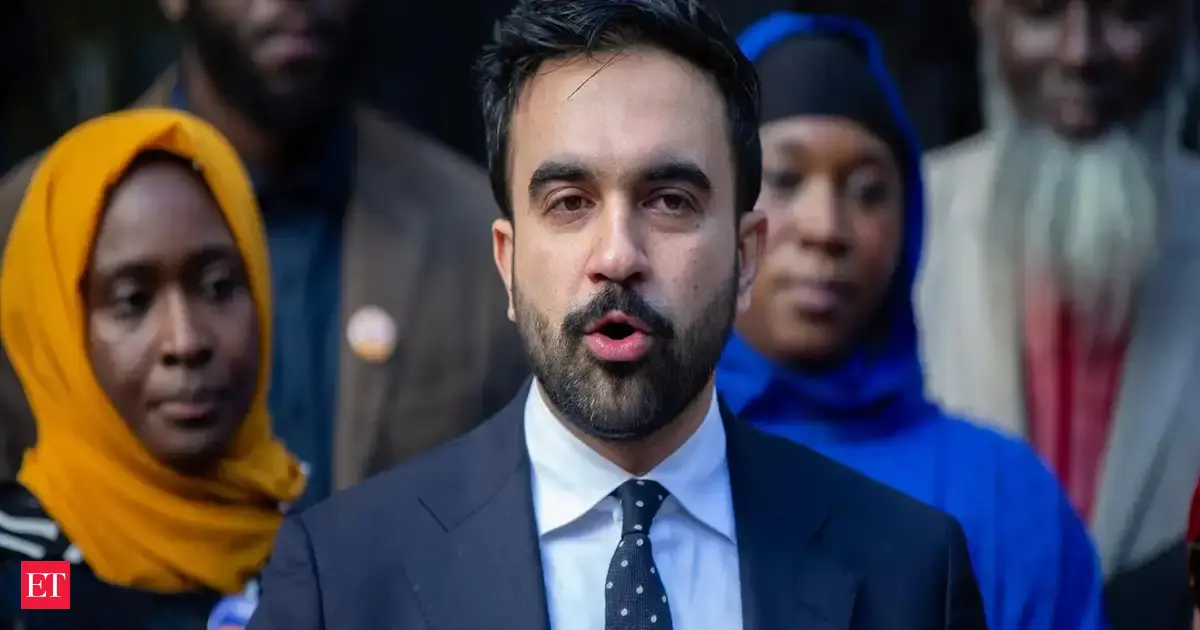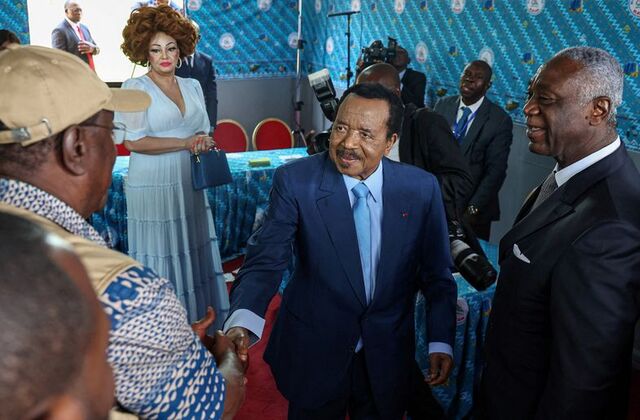Copyright truthout

As the Trump administration turbocharges the growth of a nonstop dragnet, turning daily life into a data trail ready to be weaponized, Chicago is serving as one of its most visible targets. The city has long been a flashpoint for the oppressive expansion of digital surveillance. Immigration and Customs Enforcement (ICE), universities, and local police have all deployed powerful new technologies to monitor immigrant communities, pro-Palestine organizers, and other targeted groups. Layered on top of this is the constant drumbeat of attacks on Chicago from Donald Trump himself — his threats to “send in the feds,” subsequent deployment of violent ICE raids and the National Guard, and deleterious portrayal of the city as crime-ridden and ungovernable. That rhetoric doesn’t just stigmatize Chicago; it provides cover for expanding the reach of surveillance and policing in the city. At the same time, more people are beginning to understand the depth of policing and surveillance infrastructure, from both corporations and the state. Companies like Palantir — seeded by the CIA and co-founded by billionaire Peter Thiel — quietly power ICE’s deportation machine by linking arrest records, social media posts, and even utility bills into a single profile. Flock Safety, meanwhile, floods neighborhoods with automated license plate readers that track everyday movements — who you visit, what clinics you go to, which protests you attend. Add to this the spread of facial recognition technology and the growth of massive data centers to store and process these massive quantities of information, and you begin to see the architecture of a full-fledged surveillance state. What’s striking — and urgent — is that this infrastructure isn’t hidden in some corner of Chicago. It’s built right into the fabric of everyday life in the city, marketed by these companies as providing “efficiency” or “safety” while actually deepening racialized policing and state repression. The good news is that organizers here and nationally are fighting back, challenging defense contractors, exposing the harms of this tech, and pushing for real alternatives to disinvestment and policing through community-based investments. Their campaigns are bringing greater public awareness and scrutiny to the surveillance machine that has, for far too long, operated in the shadows. While the current deployment of digital surveillance technologies may feel unprecedented, the state has long used these technologies, and communities have long resisted them. A new book, Imperial Policing: Weaponized Data in Carceral Chicago, from the Policing in Chicago Research Group, examines the Chicago Police Department’s use of specific surveillance tools and weaponized data during the start of the Black Lives Matter movement and first Trump administration, and documents how academics and communities came together to challenge them. Ilā Ravichandran of the Policing in Chicago Research Group spoke with Truthout about how this history offers a blueprint for understanding the use of digital surveillance technologies in this current moment, as ICE and Trump escalate their violence on cities like Chicago. As organizers examine every possible foothold where resistance can grow, Imperial Policing offers insights for pathways and methods for building power against this massive apparatus. This interview has been lightly edited for length and clarity. Ed Vogel: What is the Policing in Chicago Research Group (PCRG)? Can you share about how this collective formed, its politics, and methods? Ilā Ravichandran: I came into the project through the Policing in Chicago Research Group (PCRG), which formed around 2017 in the middle of a powerful wave of organizing in the city. People were shutting down intersections, police stations, and city council meetings, demanding a world without cages. As graduate students — many of us already deeply committed movement organizers in Chicago — and with a faculty member at the University of Illinois at Chicago, we wanted our research to serve those struggles directly. Our goal wasn’t to study movements from the outside but to build research with and for them. We drew inspiration from earlier traditions of activist research, from the Student Nonviolent Coordinating Committee’s work in the 1960s to feminist and decolonial scholar-activism. Our research gaze turned upward: Instead of scrutinizing already-targeted communities, we focused on exposing how surveillance and policing actually operate. That meant interviewing police officials, analyzing documents, and working directly with youth and community members navigating these systems. The PCRG was formed in a pivotal moment in cross-movement organizing in Chicago. Can you situate us in this moment? Chicago today stands out for its sharp contradictions. It’s promoted as a global city — a hub of commerce and culture, constantly expanding through corporate growth and gentrification. At the same time, political leaders and media outlets regularly portray it as a violent, chaotic city of gangs and shootings. Trump amplified that narrative, threatening to “send in the feds” as though Chicago were ungovernable. These stories serve different purposes, but both generate crisis: One produces displacement through development, and the other justifies more policing and surveillance. Chicago has long been a laboratory for policing. From the repression of labor movements in the early 20th century, to COINTELPRO surveillance of Black Power and civil rights activists, to Jon Burge’s torture regime in the 1980s and ’90s, the city has been central to testing and refining state violence. Today, those patterns persist. The Chicago Police Department (CPD) isn’t isolated — it works in tandem with federal law enforcement, national security agencies, and private corporations building surveillance tech. That’s the backdrop of Imperial Policing: a city where crises created by austerity and racial capitalism are managed not through care, but through carceral webs of policing, incarceration, surveillance, and deportation. Within this setting, we identified three overlapping “wars.” The “war on crime” — especially the so-called “war on gangs” — targets young Black and Latinx residents, saturating neighborhoods with patrols, cameras, and predictive software. The “war on terror,” ramped up after 9/11, placed Arab and Muslim communities under intense surveillance, with programs like Countering Violent Extremism pulling even teachers and counselors into security networks. And the war on immigrants, despite Chicago’s “sanctuary” label, allows CPD to funnel data to ICE, flagging immigrants as “gang members” or “felons” and facilitating deportations. These wars don’t stand alone — they reinforce one another, producing racialized archetypes like the “gang member,” the “terrorist,” and the “criminal alien” that justify punishment across multiple systems. As you named, the Chicago Police Department is infamous for many reasons, including for its use of surveillance tools. A core focus of Imperial Policing is the now notorious gang database which CPD maintained as a massive digital list, supposedly designed to track suspected gang members across the city. In 2019, the Chicago Office of Inspector General released an audit that shows that, at its peak, there were 134,242 individuals who were designated as gang members in the database. Of these individuals, 95 percent were Black or Latinx. Most people weren’t aware that they were on the list. There were no clear rules about how someone got added, and once added, there was almost no way to get out. Tell us more about the PCRG’s focus on the gang database and its significance in modeling the violence of surveillance tools? We focused on the gang database because that’s where movements asked us to focus. Groups like Black Youth Project 100 and Organized Communities Against Deportations were confronting it directly, but the system was opaque. For organizers, it was a powerful rallying point because it cut across struggles. Young Black residents were being criminalized and funneled toward incarceration, while immigrants labeled as “gang members” lost sanctuary protections and were handed to ICE. The database literally connected the “war on crime” with the war on immigrants. It also revealed what we mean by “weaponized data.” Police weren’t just collecting facts; they were creating data through racialized encounters, laundering it through a database that made it look scientific, and then circulating it widely. Once someone was tagged, that label traveled — to schools, social service agencies, immigration court, even the FBI. What started as one officer’s suspicion could reshape a person’s entire life. Take the case of Wilmer Catalan-Ramirez. In 2017, ICE raided his home and detained him because CPD had marked him as a gang member, based not on evidence, but on his Latine ethnicity and where he lived. That label, created through suspicion, became a permanent fact in the system. A single label stripped him of sanctuary protections and landed him in ICE detention for nearly a year. It took a lawsuit and public pressure to clear his record. His story shows exactly how a racialized suspicion becomes “fact,” gains legitimacy through bureaucratic circulation, and then unleashes real violence. Your framework of weaponized data clearly demonstrates how the “data” in data-based policing is deeply political and serves an ideological purpose. Can you walk us through the process by which data is weaponized in more detail? How organizers can employ this framework as part of their campaigns and political education? One of the most useful things we lay out in the book is that weaponized data doesn’t just appear out of nowhere — it’s produced, “cleaned,” and then circulated. Each stage makes the data look more neutral, but in reality, it’s reinforcing the same old systems of inequality. Production is the first step. This is where racialized suspicion gets turned into a so-called data point. Police don’t collect neutral facts; they generate data through strategic deployments. In Chicago, for instance, 72 percent of police stops target Black residents even though Black people make up only about a third of the population. That creates datasets that “prove” Black criminality — when what they actually reflect is police concentration in Black neighborhoods. Next comes Cleansing. This is where the messy, biased origins of that data get scrubbed away. Officers entered “Black” or even “scum bag” as occupations in the CPD gang database, but once those entries were databased and run through algorithms, they were converted into “risk scores.” Take Chicago’s Strategic Subject List, sometimes called the “heat list.” It was a predictive policing program the city rolled out around 2012. The idea was to assign people a numerical “risk score” that supposedly measured how likely they were to be involved in gun violence — either as a victim or an offender. The scores were built from things like prior arrests, whether someone had ever been shot, their age at the last arrest, or alleged gang ties. In practice, because the inputs were drawn from decades of racially biased policing, the list didn’t predict crime so much as recycle old police assumptions into a new “scientific” tool. A RAND Corporation study found the list had no measurable impact on reducing violence, but it did reinforce surveillance and stigma. By 2019, after heavy criticism, CPD shut it down — only to replace it with yet another data-driven system. Finally, there’s Circulation. Once the data has been “cleaned,” it flows outward through what we call carceral webs of empire. Risk scores show up in bond court, shaping who gets released. ICE agents, despite Chicago’s sanctuary status, have gained access to police databases, using gang labels to justify deportations — what we call “disavowed collusion.” By the time data reaches these spaces, its racist origins are invisible. It’s just treated as fact. For organizers, mapping these processes is powerful. It exposes how “objective” data is actually manufactured, how it gets laundered through algorithms, and how it circulates through local, federal, and even international systems. That knowledge helps identify pressure points —whether databases, algorithms, or fusion centers — that can be targeted and dismantled. And perhaps most importantly, it helps us connect struggles across scales. Local fights in Chicago against gang databases, for instance, link directly to global fights against the circulation of coerced evidence or shared counterterror tactics. Understanding weaponized data this way makes clear that abolition is not just local — it has to be coalitional and international. Imperial Policing’s deep interrogation of the Chicago Police Department’s use of weaponized data might suggest that this pattern of policing is particular to Chicago. Of course, the title itself reveals that the authors understand the problem of weaponized data operating on a much larger scale. How is policing in Chicago an issue of empire? One of the things the book makes clear is that Chicago isn’t just a city with bad cops — it’s an imperial hub. Policing here both shapes and is shaped by global projects. The CLEAR system — Citizen and Law Enforcement Analysis and Reporting — is a good example, an Oracle data warehouse that aggregates millions of police records, including purported gang affiliations. From the start, it was built for sharing. Today, more than 500 agencies nationwide use it, making Chicago a central node in the circulation of police data. CPD even marketed it as a “national model,” sending officers out to promote it. Local “innovations” quickly became national infrastructures. But Chicago also imports tactics. The Deadly Exchange campaign showed how officers trained in Israel brought home strategies of occupation, which community groups argue were later visible at sites like Homan Square in Chicago, where detainees were disappeared and tortured. The city is both exporter and importer, a crossroad of militarized policing. This plays out in diffusion networks too. The city’s Crime Prevention and Information Center sits inside CPD headquarters but houses agents from the FBI, Department of Homeland Security, Joint Terrorism Task Force (JTTF), Secret Service, and beyond. The presence of JTTF is significant — it shows that data gathered in Chicago is not just shared locally or nationally but plugged into global counterterrorism infrastructures. And while nationally researchers (including our group) have found it notoriously difficult to get clear paper trails of international data flows, we know they exist. For example, the U.S.-Israel Mutual Legal Assistance Treaty requires courts to accept shared evidence as fact, regardless of how it was obtained. In the book, we show how this very mechanism helped enable the re-criminalization and eventual deportation of Palestinian activist and community leader Rasmea Odeh, illustrating how data travels back and forth across borders to reinforce imperial policing and suppress dissent. To summarize, ICE uses CPD gang data to deport people; the FBI mines local Suspicious Activity Reports for terrorism cases. Local policing bleeds seamlessly into federal and international projects. A portion of the time that PCRG researched and wrote this book occurred during Trump’s first administration. There’s been a lot of coverage regarding the role that technology and surveillance tools are playing in facilitating his administration’s assault against threats to U.S. dominant power structures. What are your thoughts and reflections regarding this political moment and the growing power of surveillance? Trump’s first administration wasn’t just about rhetoric, it was about building machinery. He weaponized existing surveillance infrastructures to criminalize immigrants, target organizers, and discipline anyone who threatened the fantasy of white settler, hetero-patriarchal order. But let’s be clear: Trump didn’t invent this system. What he did was strip away the polite liberal mask and put surveillance and punishment on blast. He made it explicit that data, tech, and policing would be wielded as tools of domination. In that moment, we saw how so-called “neutral” technologies became central to his politics of fear. And tech firms — from Palantir to Amazon — were cashing government checks to build the very systems that made Trump’s agenda possible. If anything, Trump clarified the stakes. He reminded us that these tools are not broken — they’re working exactly as designed. And the danger is not just who’s in office, but the bipartisan consensus that policing, data, and tech is the answer to every crisis. The “smart city” is just the police state with better marketing. So when we talk about resisting surveillance, we can’t limit ourselves to demanding reform or better oversight. The lesson from Trump’s first term is that the architecture itself is the problem. Abolition means tearing out the wires, not just swapping out who sits at the controls. And that’s the work movements in Chicago and beyond are already leading — refusing to let empire’s digital leash define our lives and futures.



